Authors:
ABSTRACT
Aim
The aim of this study was to determine the chemical composition and the phases' microstructure of Aureoseal Plus
(OGNA, Italy) and ProRoot MTA (Dentsply Tulsa Dental, USA) and to compare their characteristics.
Methods
Study Design: Comparing Aureoseal Plus and ProRoot MTA microstructure by means of several analyses type. The chemical analysis
of the two cements was assessed following the UNI EN ISO 196-2 norm. X-Ray fluorescence (XRF) was used to determine the element
composition. The crystalline structure was analysed quantitatively using x-ray diffraction (XRD). Powders morphology was evaluated
using a scanning electron microscope (SEM) with backscattering detectors, and a field emission scanning electron microscope
(FESEM). Elemental analysis was performed by energy dispersive x-ray analysis (EDS).
Results
The semi-quantitative XRF
analysis showed the presence of heavy metal oxides in both cements. The XRD spectra of the two cements reported the presence of
dicalcium silicate, tricalcium silicate, tricalcium aluminate, tetracalcium aluminoferrite, bismuth oxide and gypsum. SEM analysis showed
that ProRoot MTA powder is less coarse and more homogeneous than Aureoseal. Both powders are formed by particles of different
shapes: round, prismatic and oblong. The EDS analysis showed that some ProRoot MTA particles, differently from Aureoseal, contain
Ca, Si, Al and Fe. Oblong particles in ProRoot and Aureoseal are rich of bismuth. CONCLUSIONS: The strong interest in developing
new Portland cement-based endodontic sealers will create materials with increased handling characteristics and physicochemical
properties. A thorough investigation on two cement powders was carried out by using XRF, XRD, SEM and EDS analysis. To date there
was a lack of studies on Aureoseal Plus. This cement is similar in composition to ProRoot MTA. Despite that it has distinctive elements
that could improve its characteristics, resulting in a good alternative to MTA.
PLUMX METRICS
Publication date:
Keywords:
Issue:
Vol.17 – n.4/2016
Page:
Publisher:
Cite:
Harvard: L. Cianconi, P. Palopoli, V. Campanella, M. Mancini (2016) "Composition and microstructure of MTA and Aureoseal Plus: XRF, EDS, XRD and FESEM evaluation", European Journal of Paediatric Dentistry, 17(4), pp281-285. doi: https://www.ejpd.eu/wp-content/uploads/pdf/EJPD_2016_4_4.pdf
Copyright (c) 2021 Ariesdue

This work is licensed under a Creative Commons Attribution-NonCommercial 4.0 International License.
